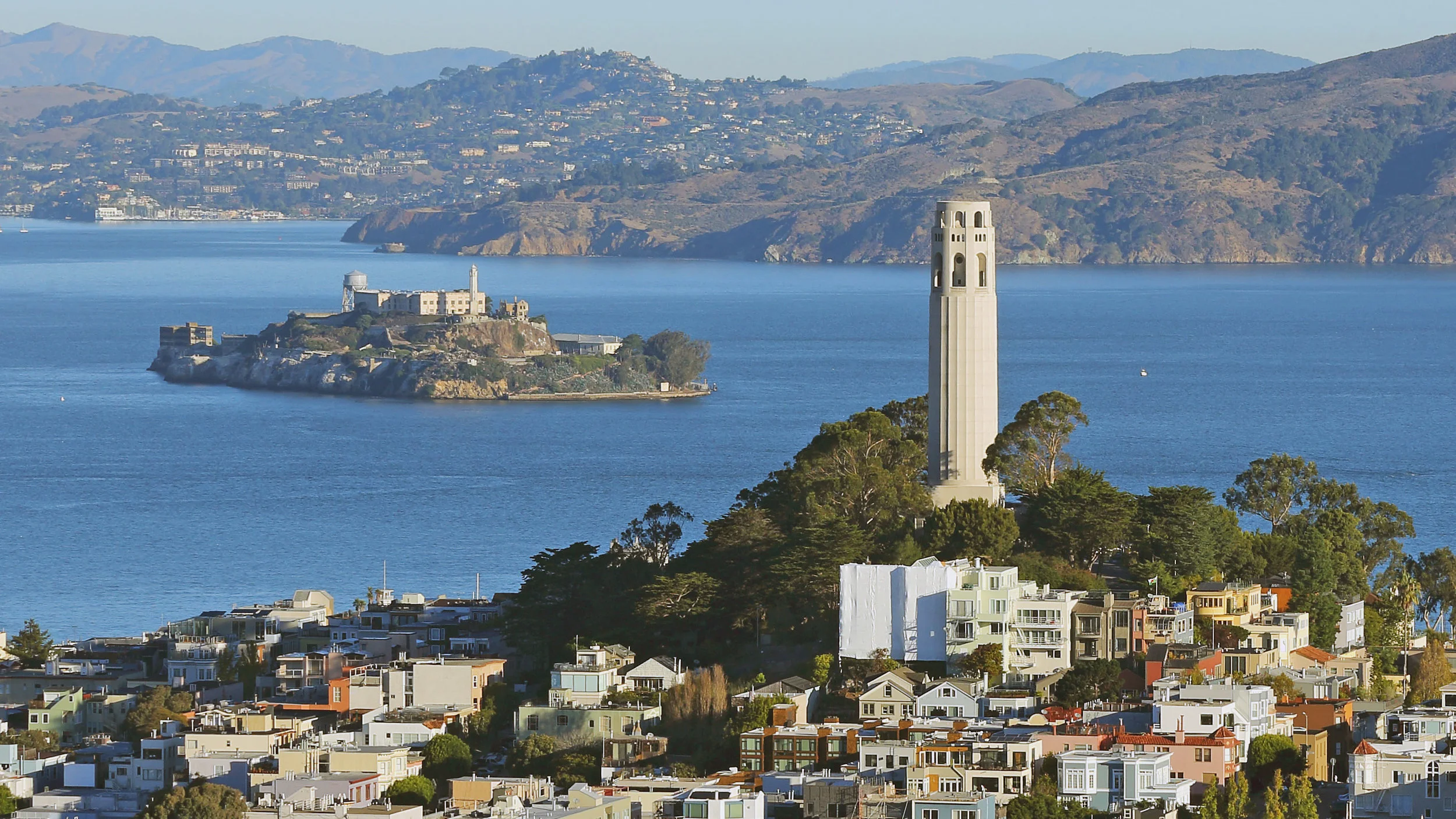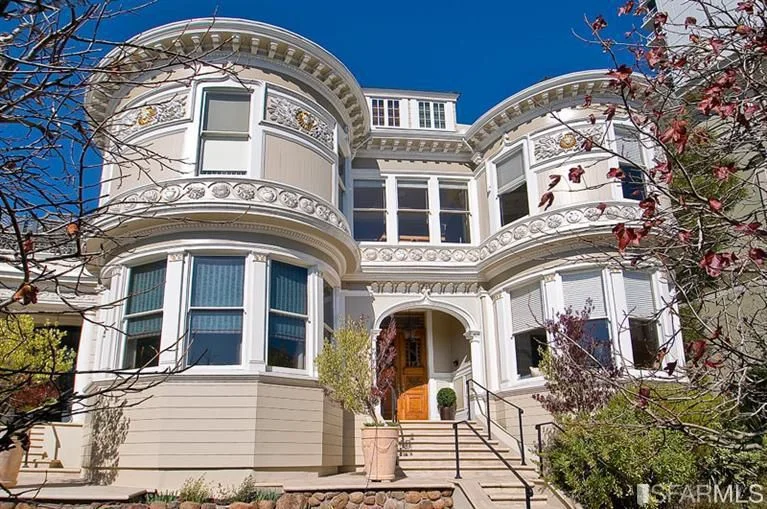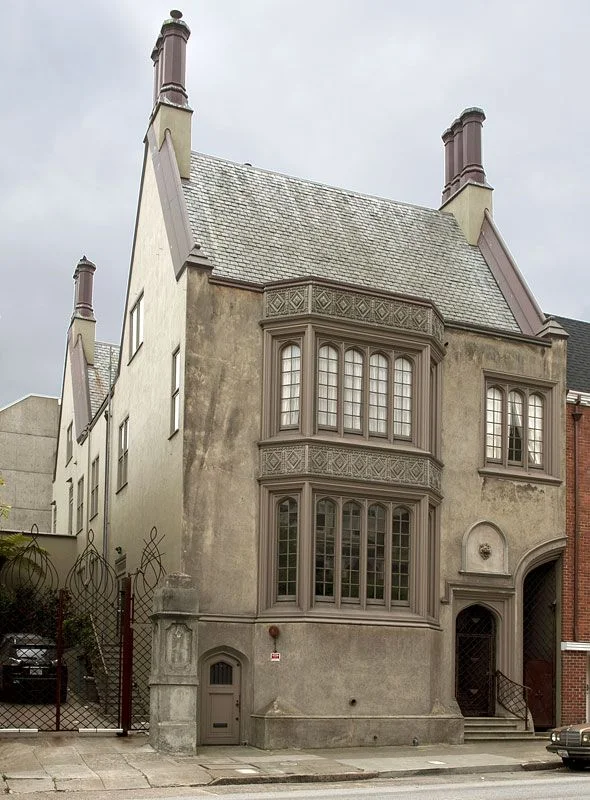Andrew Skurman - Andrew Skurman Architects
/The City's Finest Classical Practitioner
Launching our monthly series featuring San Franciscans of note, CaenLucier sits down with the city's leading classical architect, Andrew Skurman, to discuss his reinterpretation of one of Pacific Heights' last existing duplex apartments. 2000 Washington Street, originally designed by Conrad Alfred Meussdorffer in 1922, is one of the city's landmark residential buildings. It grandly sits adjacent to Lafeyette Park and the Spreckels Mansion where Danielle Steele resides when in town.
CaenLucier: You have had many projects at both 2000 Washington Street and its elegant neighbor 2006 Washington. What is it about these buildings that inspire the classical traditions your firm embraces?
Andrew Skurman: 2000 and 2006 Washington were built in the 1920s, with no expense spared, and with the most elegant classical interiors. One of the the apartments was designed by Julia Morgan. They all have high ceilings, large column free spaces and orientations that allow for an effortless reconfiguration that takes advantage of the glamour of classical design.
It is by the way possible to recreate a classical home in a very modern building, but it takes a lot more effort. In order to do that, a client of ours built a second set of classical French windows in front of the building's standard modern windows. It does work really well and one cannot imagine the bare sheet rock walls behind the paneling, moldings and details
CL: As I remember, your clients purchased the full floor apartment completely gutted. Did this offer any advantages?
AS: When an apartment is old and in bad condition, it might be less expensive and one can achieve better results by gutting it rather than changing just part of it. You are then completely free to redo all the electricity, heating, and plumbing to modern standards, and to conceive a completely different floor plan that takes advantage of every square inch of available space.
Gutting allows for a complete re-creation and the imagination of the client can really flow. But in buildings of quality, there usually are elements that should not be eliminated but reworked. I love to find charming elements to retain and build upon. It saves expense as well as maintaining the original historical beauty. In one of these apartments, we reconfigured everything except for a delicate and beautiful dining room. Which we restored with care.
One of the apartments at 2000 Washington Street is morphing into something different for the third time. When we first created it, it had dark wood, a colorful palette, and traditional furniture. Then, under the magic wand of Fisher Weisman, it had a kind of a facelift, it was entirely painted white and became one of my favorite things: a classical background with modern furniture. We are now completing a third remodel on the same apartment! But our black and white marble floor in the entrance and many other features have remained through all the changes.
CL: How do you feel your interior architecture decisions held up when the visual palette changed from traditional to contemporary after we sold it to our clients?
AS: As an architect, it is wonderful to see a space you created evolve under the impetus of the new owner’s taste. There isn't just one kind of beauty, one esthetic or one architectural truth. I look forward to a diverse future, full of classical homes and homes that whisper their classicism.
CL: What were your favorite aspects of the renovation when it was completed?
AS: There is a gallery of arches, long and wide, which allows for the display of art better than a mere corridor. As one walks about 50’ through this 8’ wide space from the entrance hall to the living room, the view that pulls you forward is of the bay in its full glory. The gallery has a quality of light that reminds me of one of my favorite places: the Vasari corridor, in Florence, that jumps from the Uffizi Gallery over the Arno River to the Palazzo Pitti. This is where the museum exhibits self-portraits of artists collected since the 16th century.
CL: Were there any specific historical design elements that you incorporated into this project?
AS: The language of classicism is so rich. The paneling details are from the Wren Period in England, a voluptuous raised panel. The pilasters are in a fancy Doric style from the baths of Caracalla in ancient Rome. The black and white patterned paving in the entrance hall was inspired by Robert Adam (an 18th century Scottish architect). The muntins on the French doors and windows reference the fretwork on Chippendale furniture.
CL: You and Paul Wiseman worked on this project together originally (prior to working with Fisher-Weisman seen in these images). What was the experience like working with designers of your caliber?
AS: Paul Wiseman has a huge palette of talents, from pure classical to modern. He can create the most detailed interior or a luxurious modern home with great art on the walls. He excels at everything he touches. We speak the same design language and share many references. We recently had dinner together and I enjoyed every minute.
CL: You regularly visit your residence in Paris. How does your exposure to the city's timeless elegance enhance your design vocabulary?
AS: In my constant research of classical beauty, I love to roam around the Europe, scrutinizing and analyzing the details: in the cathedral of Reims, the integration of restored medieval stained glass windows, cohabiting with others made in 2011 by Imi Knooebel; in London the saucer domes of St. Paul, with their lacy edges, Wren’s simple yet sculptural solution to the ceiling of the nave. I can visit the same building many times, and there is always something new that catches my eye.
Paris is a stopover from which I go to all the other countries, Italy, my most beloved, where I go every year, but also to Spain and England, Germany and Greece. I was in Greece this summer. The Parthenon was covered with cranes. What a beautiful image of the constant efforts, even in a country with considerable economic problems, to maintain our common patrimony. I mentally took in once more the proportions of the majestic columns and their orders.
CL: What are your favorite projects that you are working on now?
AS: We are currently working on an addition to building that is a national monument at a major East Coast university. More next time we talk…























